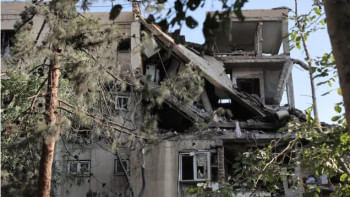Apparel future lies in manmade fibre

Bangladesh's primary textile sector is undergoing rapid changes with local millers taking to producing significant amounts of manmade fibres alongside cotton fibres to meet rising global demand.
Import of manmade fibres grew a substantial 45.72 per cent to reach 99,597 tonnes in the first five months (January to May) of this year compared to 68,348 tonnes during the corresponding period in 2020, according to Bangladesh Textile Mills Association (BTMA) data.
Of the imports, about 61,693 tonnes were polyester staple fibre, 32,454 tonnes viscose staple fibre, and around 5,450 tonnes tencel and flax fibre.
The spending on such imports also increased amidst the ongoing coronavirus pandemic, which had disrupted the global supply chain for a long time.
Local importers, millers, traders and spinners spent about Tk 1,221 crore during the January-May period this year compared to around Tk 706 crore in the same period the last year, registering 73 per cent year-on-year growth.
The three main manmade fibres -- polyester, viscose and tencel -- have emerged as substitutes for cotton fibres, bringing on a revolution in global fashion trends.
Of all garment items produced in the world, 78 per cent is made from manmade fibres while cotton fibre accounts for the rest, according to data from International Textile Manufacturers Federation (ITMF), a Switzerland-based platform for global textile makers.
Mainly Japan and China have brought significant changes to global fibre technologies while ensuring that apparel items remain comfortable even when made from petroleum by-products, plastic bottles, pineapple leaves or even tree bark.
But the case of Bangladesh is almost in reverse compared to the global trend.
Of the total garment items made in the country, more than 74 per cent are from cotton.
Using cotton fibres instead of manmade ones for export-oriented garment items is one of the major reasons premium prices cannot be availed from international clothing retailers and brands.
The price chart indicates that the value of Bangladeshi made garment items has not increased since the Rana Plaza tragedy.
However, local garment factory owners are now maintaining global workplace safety standards spending nearly $4 billion as per recommendations of the Accord and Alliance, two foreign agencies working on such upgrades.
This proves that limitations to product variations and overdependence on cotton fibres are the main reasons for premium prices from international retailers and brands staying elusive.
"For instance, the price range of a cotton fibre T-shirt made in Bangladesh could be between $3 and $7," said Faruque Hassan, president of the Bangladesh Garment Manufacturers and Exporters Association (BGMEA).
However, if the same T-shirt is made from manmade fibres, the price is at least 30 per cent higher, he added.
The demand for manmade fibre-based garments is growing all over the world mainly due to being comfortable, durable and functional and ability to protect against cold.
BTMA President Mohammad Ali Khokon said the government should withdraw the nearly 15 per cent advanced income tax and advanced tax on manmade fibre imports to help expand the sector.
The total investment in the spinning sector alone currently stands at more than $8 billion but if manmade fibre-based industries grow further, so too will investment, he added.
For example, a more sophisticated section of manmade fibre-based industries is the filament yarn industry, where it takes at least Tk 500 crore to set up a factory.
So, in the future entrepreneurs will set up these types of factories in Bangladesh if the local manmade fibre-based industries can shine, according to the BTMA chief.
Khokon pointed out that Bangladeshi garment manufacturers used to import a large amount of fabrics to make jackets but local mills are now supplying the high-end textiles required thanks to investment in the sector.
Monsoor Ahmed, additional director of the BTMA, said use of sophisticated technologies in production of manmade fibres make them very comfortable while the demand for such items has been rising rapidly.
Currently, some 40 local factories have been importing, using and selling manmade fibres in Bangladesh while it was less than 30 just five years ago.
The rising number of factories that use manmade fibres also indicates that millers are showing a heightened interest in the sector.
However, manmade fibres are not a complete replacement for cotton fibre, Monsoor added.
The BGMEA chief also demanded a 10-year tax holiday for investments in the manmade fibre sector alongside a 10 per cent incentive for manmade fibre-based garment exporters.
"This would help increase investments in this new opportunity to grab a greater share of the global manmade fibre-based garment markets," he said, adding that Bangladesh has the installed capacity to manufacture and export manmade fibre-based apparel items.

 For all latest news, follow The Daily Star's Google News channel.
For all latest news, follow The Daily Star's Google News channel. 



Comments